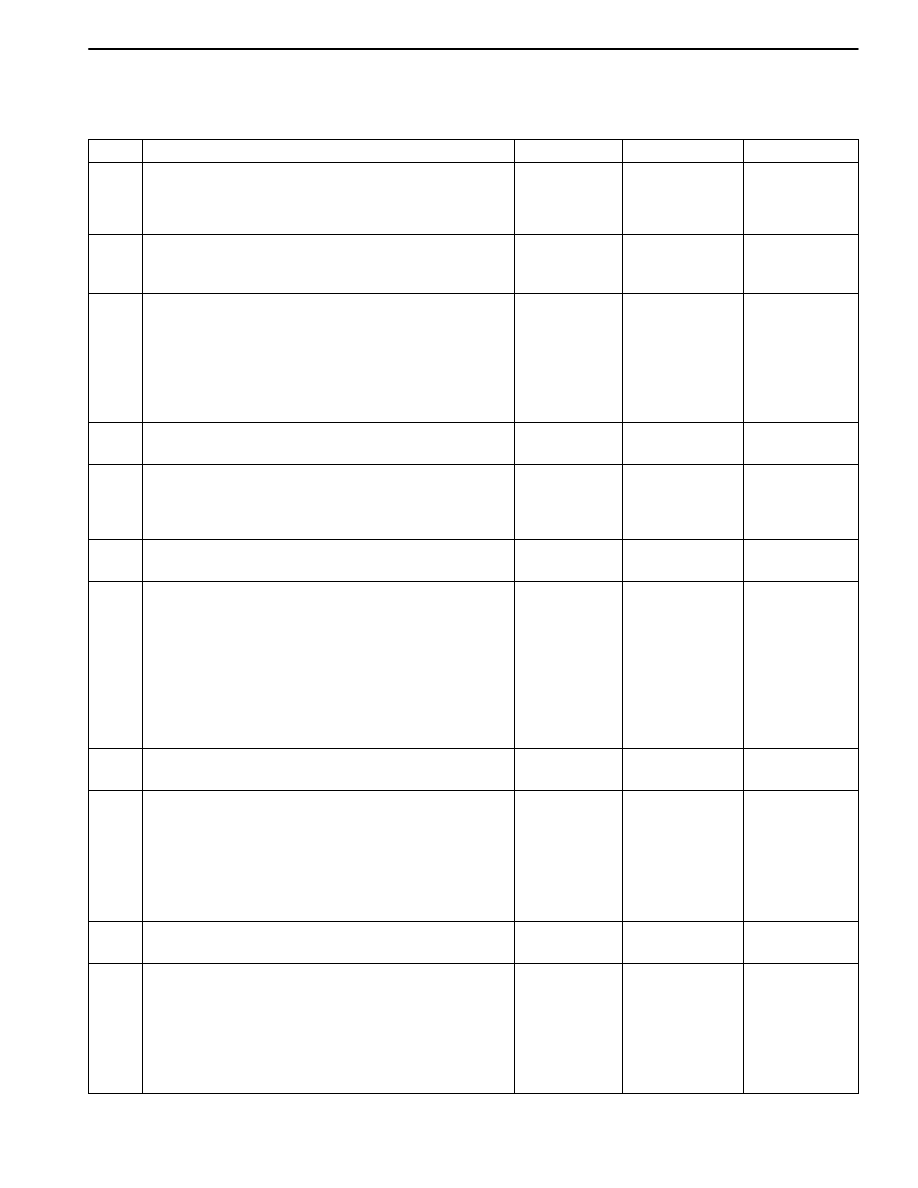Daewoo Matiz (2003 year). Service manual - part 96

1F – 294 ENGINE CONTROLS
CUTS OUT, MISSES
Definition: Steady pulsation or jerking that follows en-
gine speed, usually more pronounced as engine load in-
creases. The exhaust has a steady spitting sound at idle
or low speed.
Step
Action
Value(s)
Yes
No
1
Were the Important Preliminary Checks performed?
–
Go to Step 2
Go to
“Important
Preliminary
Checks”
2
Check the ignition system voltage output for all of
the cylinders using a spark tester.
Is spark present on all of the cylinders?
–
Go to Step 3
Go to “Ignition
System Check”
3
1. Inspect the spark plugs for excessive wear,
insulation cracks, improper gap, or heavy
deposits.
2. Check the resistance of the ignition wires.
Replace any ignition wires that have a resistance
greater than the value specified.
Is the problem found?
30000
Ω
Go to Step 4
Go to Step 5
4
Repair or replace any components as needed.
Is the repair complete?
–
System OK
–
5
With the engine running, spray the ignition wires with
a fine water mist to check for arcing and shorting to
ground.
Is the problem found?
–
Go to Step 6
Go to Step 7
6
Replace the ignition wires.
Is the repair complete?
–
System OK
–
7
1. Perform a cylinder compression test.
2. If the compression is low, repair the engine as
needed.
3. Inspect for proper valve timing, bent pushrods,
worn rocker arms, broken or weak valve springs,
and worn camshaft lobes.
4. Inspect the intake manifold and the exhaust
manifold passages for casting flash.
Is the problem found?
–
Go to Step 8
Go to Step 9
8
Repair or replace any components as needed.
Is the repair complete?
–
System OK
–
9
1. Check the fuel system for a plugged in-line fuel
filter.
2. Check the fuel system for low fuel pressure. If the
fuel pressure is below the value specified, service
the fuel system as needed.
3. Inspect for contaminated fuel.
Is the problem found?
380 kPa
(55 psi)
Go to Step 10
Go to Step 11
10
Repair or replace any components as needed.
Is the repair complete?
–
System OK
–
11
1. Disconnect all of the fuel injector harness
connectors at the fuel injectors.
2. Connect an injector test light to the harness
terminals of each fuel injector connector.
3. Note the test light while cranking the engine for
each fuel injector.
Does the test light blink for all of the fuel injectors?
–
Go to Step 13
Go to Step 12